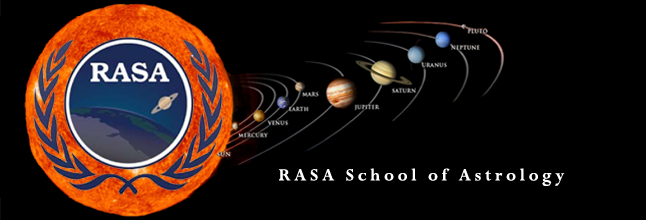by Dane Rudhyar
(Excerpts from American Astrology May 1954)
SYMBOLS are necessary if human beings are to communicate with each other. Language is a coherent, consistent and traditional set of symbols, which we call “words.” But religions, the arts, mathematics are also complex and systematised organizations of symbols. Culture and civilization require the use of such systems, for it is only by using these symbols that a person, a group of persons, a whole generation, can transfer to others the knowledge, the feeling quality, the wisdom gained as a result of their individual and group experiences. Astrology is likewise an organized set of symbols. It is a language whose purpose it is to communicate knowledge — a certain kind of knowledge. This “language” employs several series of symbols which convey knowledge about men and the universe. Symbols integrate the separate experiences of a vast number of men. They take events, from the realm of the fortuitous, the unprecedented, the unique, and the incomprehensible to the realm of “universals.” The logical sequence of symbols which one finds in all languages, in all scientific theories, in all traditional art forms, and in all religious rituals make the myriads of seemingly chaotic, unpredictable and senseless facts of life fall into patterns of order and of meaning. A thousand events or personal situations come to be seen as mere variations on a central theme. The symbol depicts for us this one significant, theme. And the theme is part of a coherent sequence of similar typical challenges, which acquire purpose through their relationship. Expressed through symbols, life becomes condensed into a relatively few, and an interrelated few, units of experience. Each unit is a concentrate of the experiences of millions of people. Today, we, who have been molded by the Western World’s tradition usually think that there is for each of us an infinite variety of possible experiences. What we experience is strictly our own; every moment is new; no event is ever repeated.
Experience is Cyclic
However, while it is true that human experience is unlimited, the normal experience of man is finite in so far as the number of characteristic and significant types of experiences are concerned. If a man could be moving, regardless of physical obstacles, on the surface of the globe along the equator, he could go on endlessly. His motion would be “unlimited.” Yet his experiences of conditions and scenes along the equator would be “finite.” After having completed a whole turn around the globe he would see again the same basic geographical structures. His experiences would basically repeat themselves, even though he might respond to them differently at each new encounter. Man’s basic life experiences are likewise a closed series. By “basic,” I mean here, typical and characteristic underneath surface variations. We find the same principle of repeated series of experiences in relation to time. Time is cyclic. Everything that lives begins, reaches a climax, and ends— but only to begin again. The universal illustration of this is the cycle of seasons in relation to vegetation in temperate climates. That there is a yearly cycle of the seasons does not mean, however, that we can expect an exact and literal repetition of actual events or facts each year. What recur are, for the living plant, basic challenges of growth. Each spring, the seeds of wheat are new seeds, the weather somewhat differs, and other facts may vary. But the over-all, basic spring challenge for the species of wheat is that there should be germination and green growth. The facts may vary, but the meaning remains, year after year. Astrology is a language of symbols which aims at giving to men the knowledge of the meanings, at the core of the seemingly haphazard facts of a person’s life Its symbols and its cycles refer to series of meanings. Facts may be inferred or deduced from the meanings; but only in an approximate manner. A variety of facts may be expressed by a transit conjunction of Uranus to the natal Sun of a person; but the meaning of the conjunction remains fundamentally the same, whatever the facts. This meaning can be clearly perceived, however, only by the use of the same type of faculty which a person should use when seeking to understand the meaning of a Catholic Mass, the meaning of a Chinese Bodhisatva statue, the meaning of a Beethoven Symphony—or the meaning of the universe! We may speak of “intuition;” but this word is so imprecise as not to explain very much indeed. What is meant is the ability to think in terms of “universal qualities” instead of “particular facts.” It is the ability to see through successions of apparently fortuitous events the ordered series of cyclic changes which mark the unfoldment of a life-organism, a person, a soul, a nation. Such an ordered series are closed series. They go, not from birth to death, but from birth to rebirth. Time does not-come to an end, anymore than the aviator flying along the equator ever meets the end of the globe. There is no end, either to space or to time—or to “life.” There are ever repeated series of stages, or phases of development, from beginning to re-beginning. There is no end, but only the ever-present challenge to begin again—to be reborn, at a higher level of experience. The whole of astrology is a dramatization of this central idea: It is, spiritually understood, a means to help us “begin again.” Astrology is a dramatization of the Easter symbol in Christianity—the spring equinox, the “First Point” of Aries. But this First Point of Aries does not mean, birth. It means rebirth; because there is always a preceding cycle. Once begun, the cycle leads inevitably to a new cycle. It leads to it rhythmically through a measured, and indeed a “finite” series of basic phases of development, of basic experiences.
 RASA School of Astrology Learn The Language of the Stars!
RASA School of Astrology Learn The Language of the Stars!